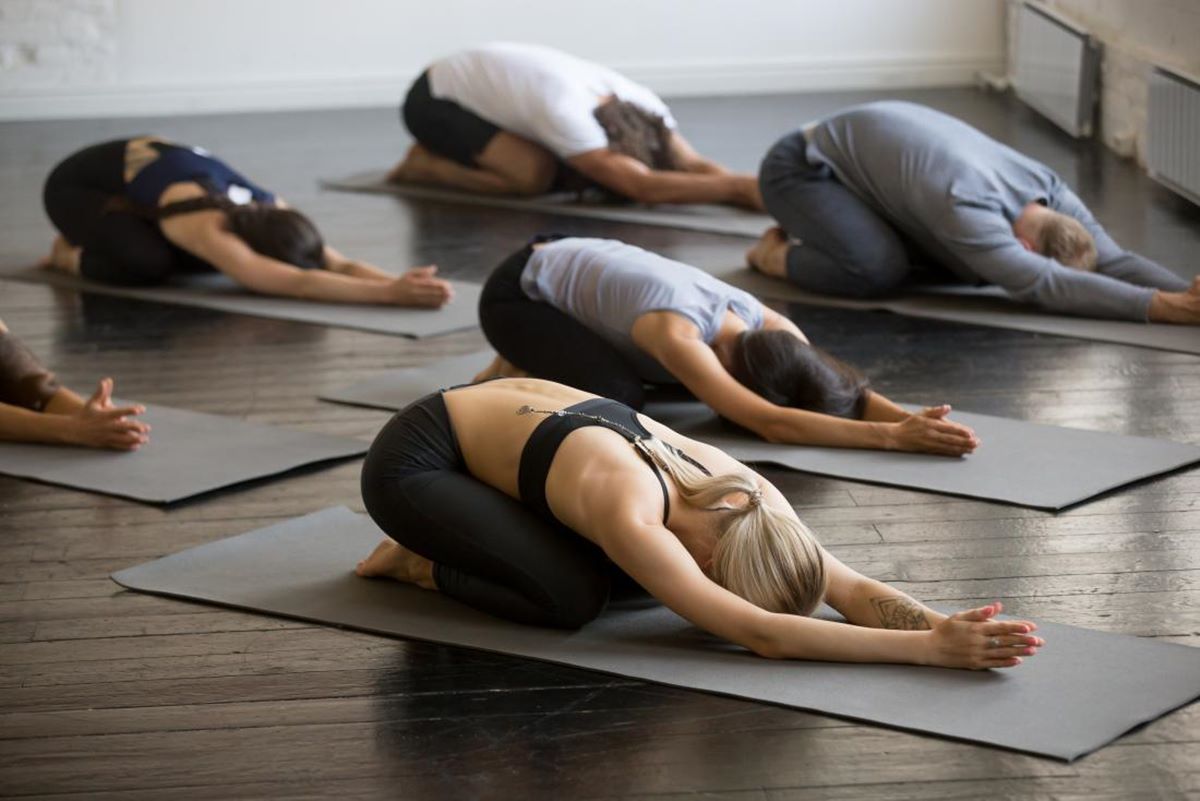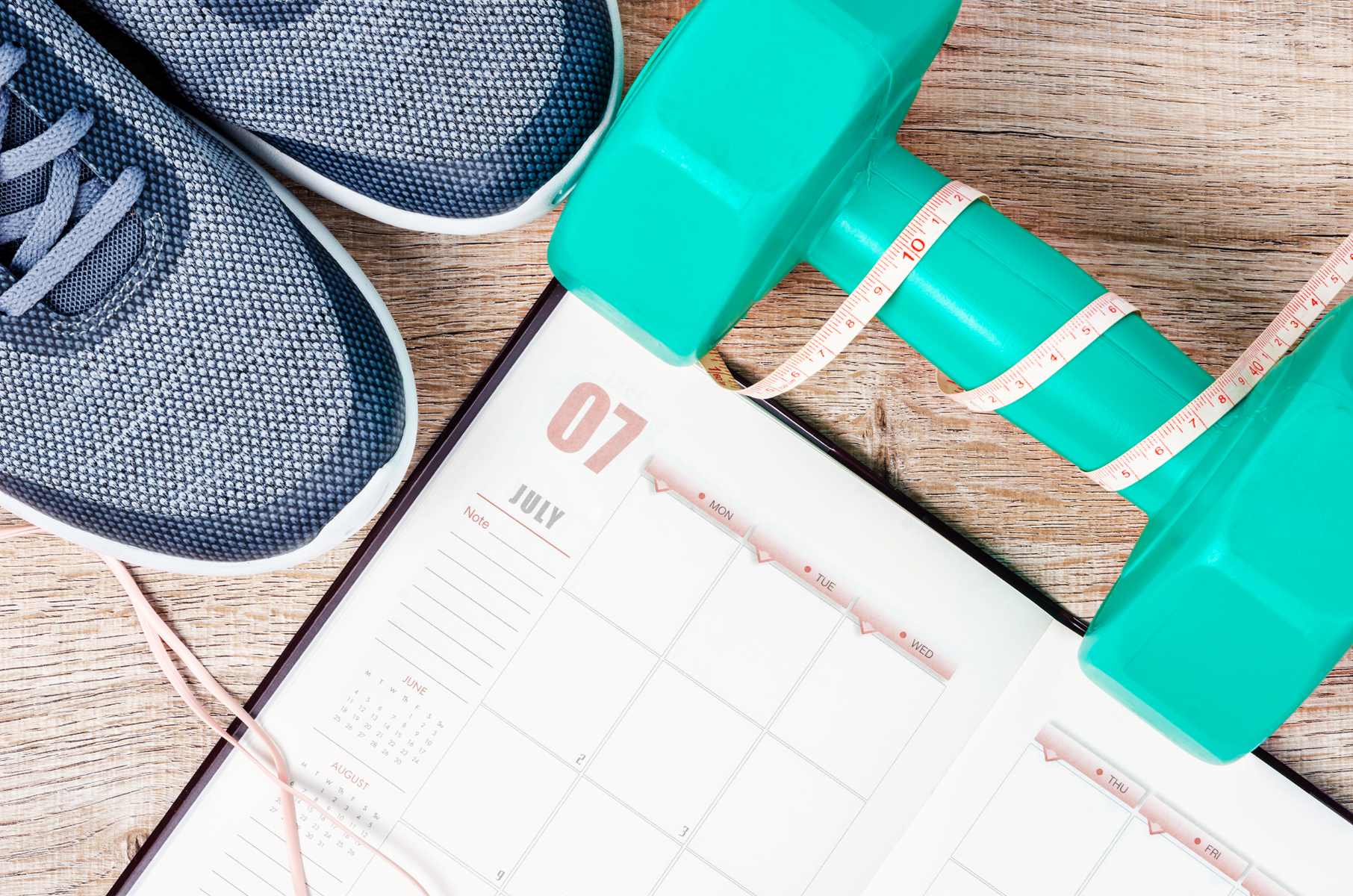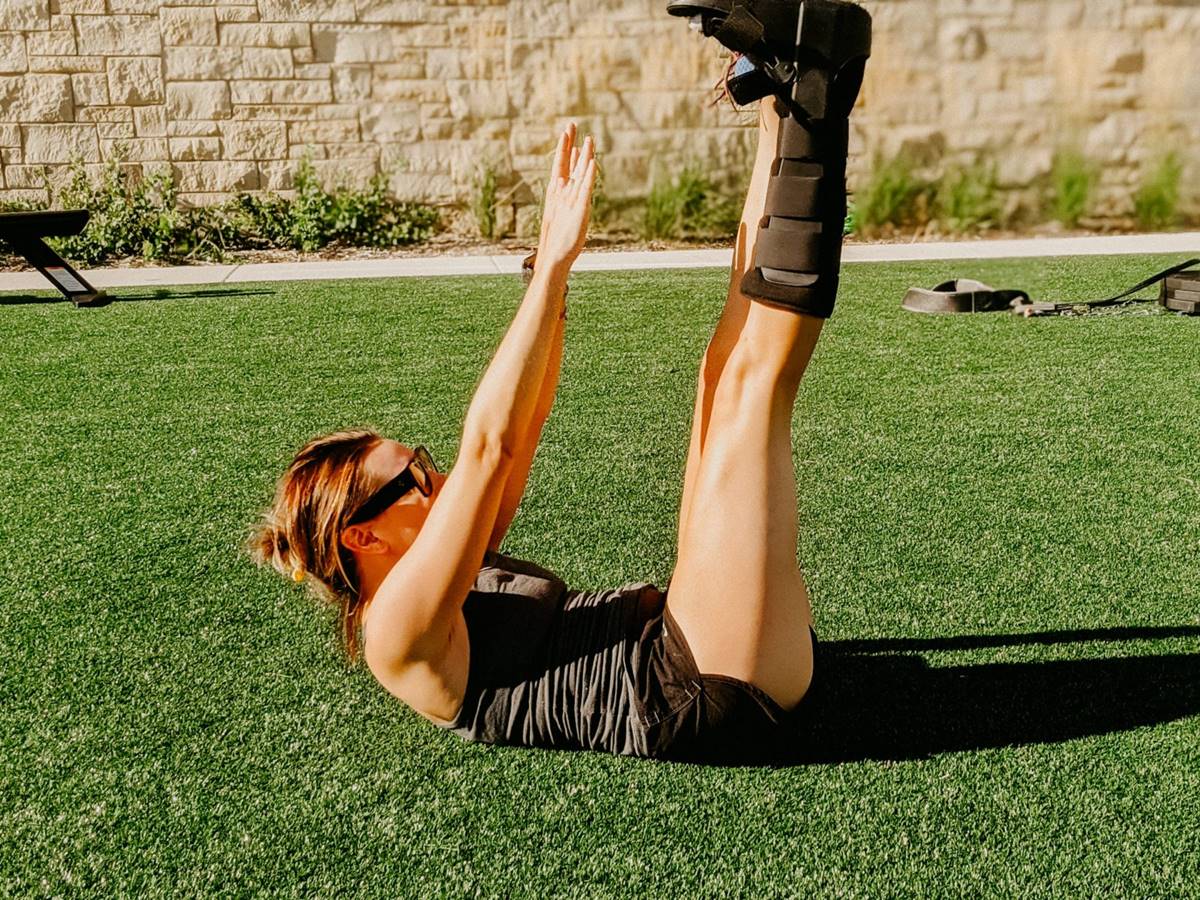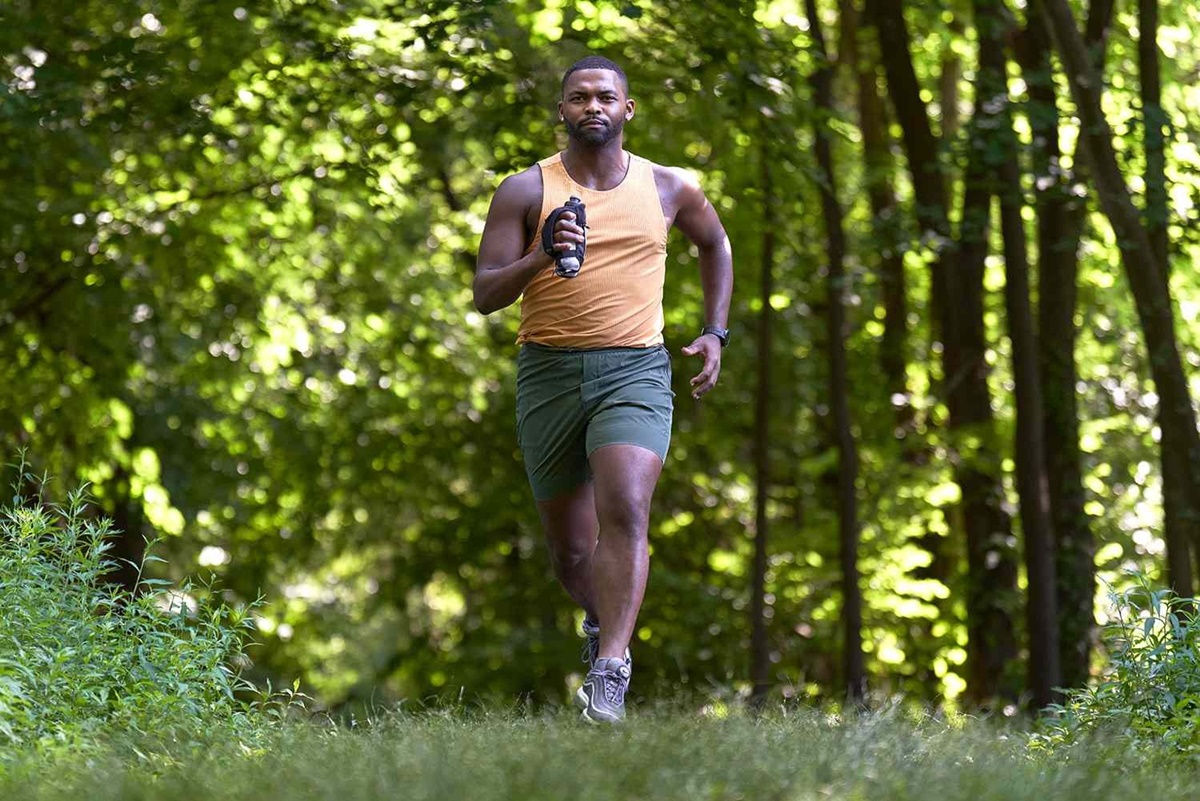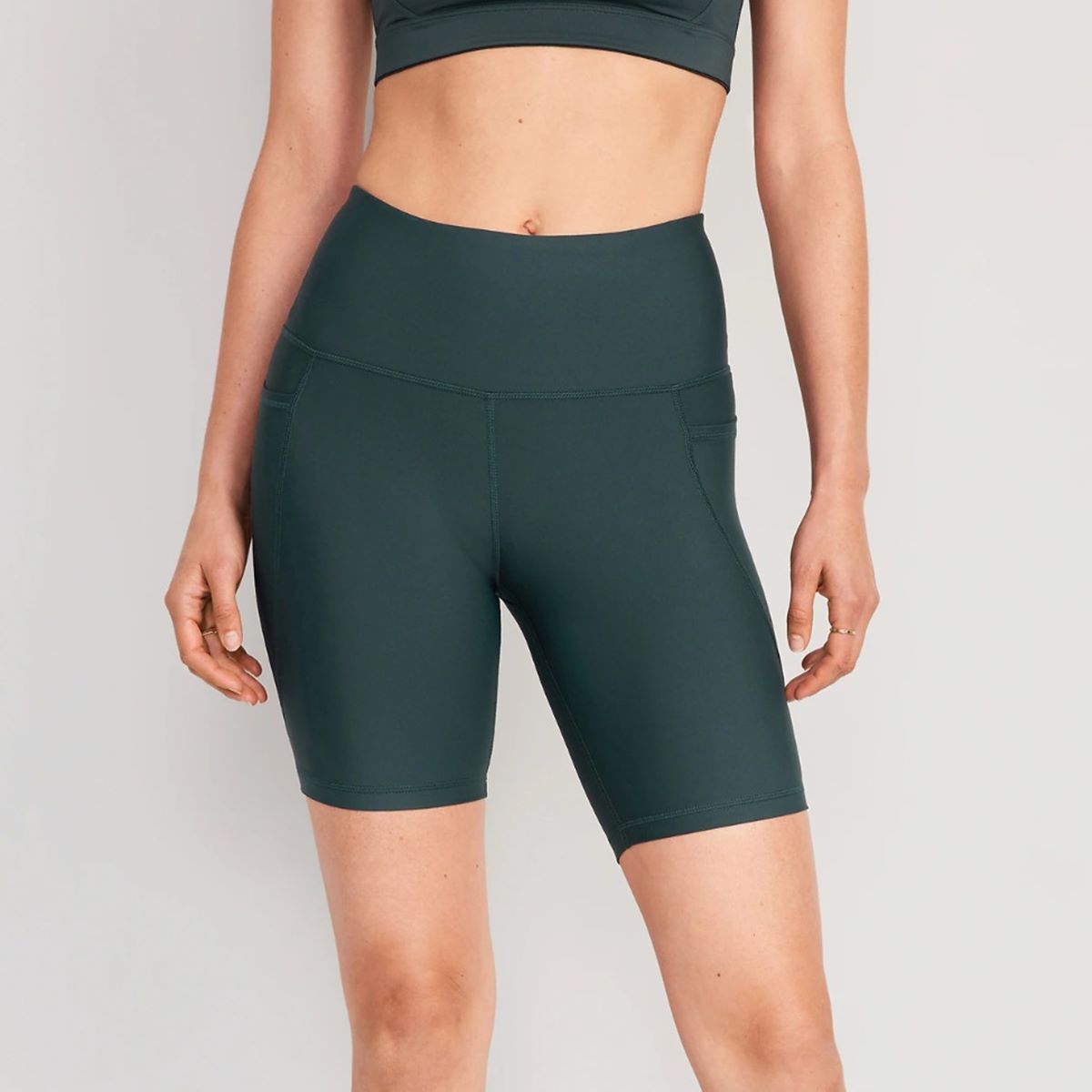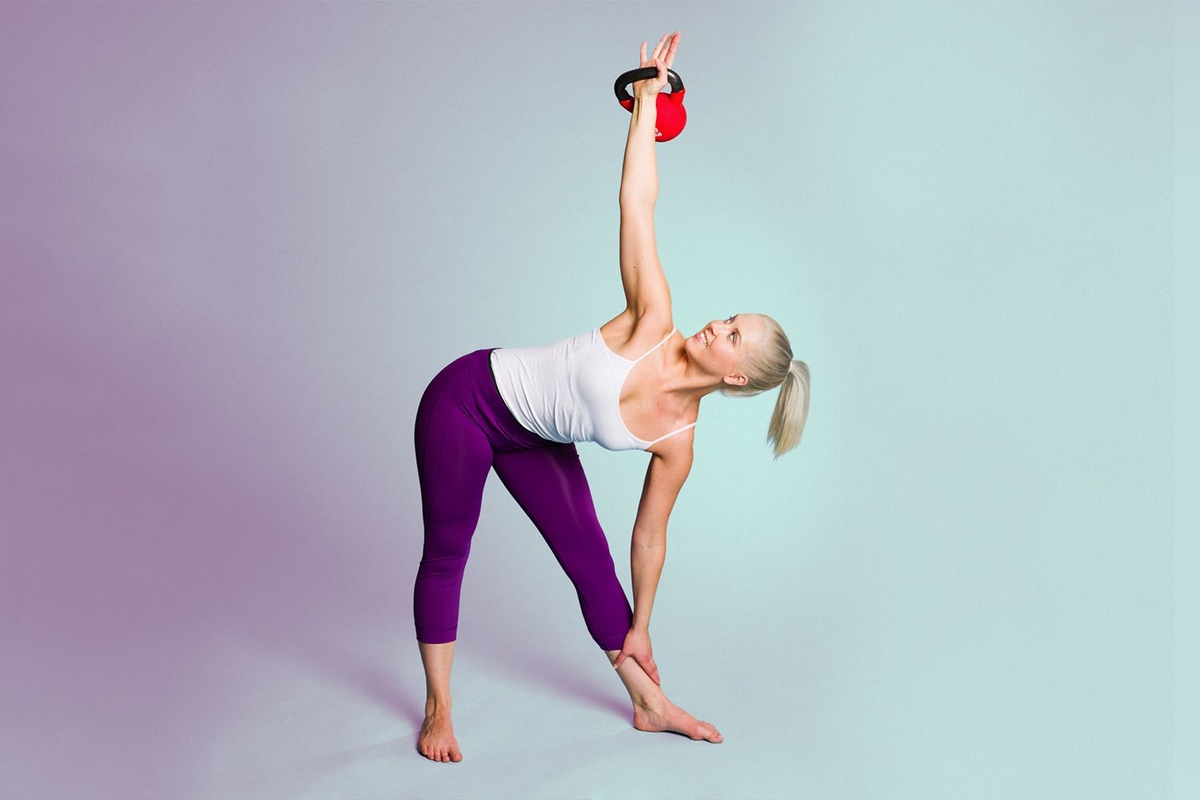

Featured
What Is A Windmill Exercise
Modified: January 2, 2024
Discover the benefits and technique of the Featured Windmill Exercise, an effective full-body workout that improves strength and flexibility, all in one move.
Introduction
The windmill exercise is a versatile and effective movement that targets multiple muscle groups and improves overall strength, flexibility, and stability. Derived from the motion of a windmill turning its blades, this exercise involves a rotational movement pattern that engages the core, shoulders, hips, and legs. Whether you are a fitness enthusiast, an athlete, or simply looking to spice up your workout routine, incorporating windmill exercises can bring various benefits to your fitness journey.
In this article, we will delve into the details of the windmill exercise, exploring its definition, benefits, proper execution techniques, common mistakes to avoid, variations, as well as precautions and safety tips. By understanding the fundamentals of this exercise, you’ll be able to optimize its effectiveness and prevent the risk of injury.
The windmill exercise is an excellent addition to your workout routine due to its ability to enhance core stability, increase range of motion, and improve muscle coordination. Whether you’re engaging in strength training, general fitness, or sports performance, incorporating windmill exercises can help you achieve your fitness goals.
So, let’s embark on this fitness journey and discover the power and versatility of the windmill exercise!
Definition of a Windmill Exercise
The windmill exercise is a dynamic movement that involves a combination of a lateral bend and rotation. It mimics the motion of a windmill’s blades turning in the wind, hence the name. This exercise primarily targets the core muscles, including the obliques, while also engaging the shoulders, hips, and legs.
To perform a windmill exercise, you begin in a standing position with your feet shoulder-width apart. One arm is extended overhead, while the other arm reaches down toward the opposite foot. As you hinge at the hips, you rotate the torso, allowing the extended arm to follow the line of the movement. The goal is to maintain a strong core and stable position throughout the exercise, emphasizing proper form and control.
While the windmill exercise is often performed with a kettlebell, it can also be done with a dumbbell, barbell, or even with bodyweight alone. The resistance used can be adjusted based on your fitness level and goals.
By incorporating the windmill exercise into your workout routine, you can improve overall core strength, increase spinal stability, enhance shoulder mobility, and develop greater hip flexibility. Additionally, it challenges your balance and coordination, making it an effective functional exercise that translates to real-life movements.
Now that we understand the basic definition of a windmill exercise, let’s explore the numerous benefits it offers for your physical fitness and well-being.
Benefits of Windmill Exercises
Windmill exercises offer a plethora of benefits for individuals of all fitness levels. Whether you’re a novice or an experienced athlete, incorporating windmill exercises into your routine can contribute to improved strength, flexibility, and overall physical fitness. Here are some of the key benefits:
- Core Strengthening: The windmill exercise primarily targets the core muscles, including the obliques. By engaging in this movement, you develop core strength, stability, and endurance. This, in turn, helps improve your posture, balance, and overall functional fitness.
- Improved Spinal Stability: The rotational movement pattern of the windmill exercise activates the muscles around the spine, helping to improve spinal stability and reduce the risk of injuries. It also enhances the mind-body connection, allowing you to move with greater control, precision, and mindfulness.
- Increased Hip Flexibility: The windmill exercise requires a deep hip hinge, which helps to stretch and strengthen the hips. Regular practice can lead to increased hip mobility and flexibility, making it especially beneficial for activities like squats, deadlifts, and sports that involve lower body movements and agility.
- Enhanced Shoulder Mobility: The windmill exercise involves raising one arm overhead while reaching for the opposite foot, which stretches and strengthens the shoulder joint and surrounding muscles. Over time, this can improve shoulder mobility, range of motion, and alleviate tightness or discomfort in the upper back and shoulders.
- Functional Fitness: Windmill exercises mimic real-life movements, making them highly functional for daily activities. Whether you’re carrying groceries, lifting objects, or participating in sports, the improved core stability, balance, and coordination gained from windmill exercises can enhance your performance and reduce the risk of injuries.
- Full Body Engagement: While the windmill exercise primarily targets the core and shoulders, it also engages several other muscle groups, including the glutes, hamstrings, quadriceps, and calves. This comprehensive engagement provides a more efficient and effective workout for multiple areas of the body.
These are just a few of the benefits that windmill exercises can offer. Incorporating this dynamic exercise into your routine can yield positive results, helping you reach your fitness goals and improve your overall physical well-being.
How to Perform a Windmill Exercise
Performing a windmill exercise may seem intimidating at first, but with proper technique and practice, it can become a staple in your fitness routine. Follow these steps to execute the windmill exercise correctly:
- Starting Position: Stand with your feet hip-width apart, toes pointing slightly outward. Hold a kettlebell or dumbbell in one hand, or keep your hands extended to the sides for bodyweight windmill exercises.
- Hinge at the Hips: Begin the movement by hinging at the hips, shifting your weight towards the side opposite to the hand holding the weight. Keep your spine neutral, chest lifted, and your core engaged.
- Rotate and Reach: As you hinge at the hips, rotate your torso towards the same side as the weight, allowing your chest to face the ground. Simultaneously, reach your free arm down towards the opposite foot, maintaining a straight line from the extended arm to the grounded hand.
- Keep a Steady Gaze: Throughout the movement, maintain a steady gaze towards the extended arm or on a fixed point on the ground. This helps with balance and stability.
- Engage the Core: To ensure proper form and stability, engage your core throughout the exercise. Imagine pulling your belly button towards your spine, activating your deep abdominal muscles.
- Return to Starting Position: Slowly reverse the movement by engaging your core and lifting your chest, rotating back to the starting position. Keep your hips square and your weight centered between both feet.
- Switch Sides: Repeat the exercise on the opposite side, maintaining the same form and technique.
Start with a lighter weight or even just bodyweight until you feel comfortable with the movement. As you gain strength and confidence, gradually increase the resistance or use a heavier weight implement.
Remember, it’s crucial to focus on proper form rather than rushing through the exercise. Performing the windmill exercise with control and precision will yield the best results and minimize the risk of injury.
Common Mistakes to Avoid
While the windmill exercise can be highly beneficial, it’s important to be aware of common mistakes that can hinder your progress and increase the risk of injury. By avoiding these errors, you can perform the exercise safely and effectively. Here are some common mistakes to watch out for:
- Using Too Much Weight: One of the most common mistakes is using too much weight, compromising your form and putting unnecessary strain on your muscles and joints. Start with lighter weights or bodyweight variations and gradually increase the resistance as your technique and strength improve.
- Lack of Core Engagement: Neglecting to engage your core muscles during the windmill exercise can lead to poor stability and compromised form. Focus on keeping your core tight and activated throughout the movement to maintain proper alignment and stability.
- Allowing Rounded Shoulders: Allowing your shoulders to round forward can put strain on your neck and upper back. Keep your shoulders pulled back and down throughout the movement, maintaining a proud chest and good posture.
- Not Focusing on Hip Hinging: One of the key elements of the windmill exercise is the hip hinge. Failing to properly hinge at the hips can limit the range of motion and diminish the effectiveness of the exercise. Focus on hinging from the hip joint, not from your lower back.
- Moving Too Quickly: Performing the windmill exercise in a rushed or jerky manner can compromise form and increase the risk of injury. Slow and controlled movements allow for better muscle engagement and stability. Take your time and focus on quality rather than quantity.
- Incorrect Foot Placement: Placing your feet too close together or too far apart can negatively impact your balance and stability during the exercise. Keep your feet shoulder-width apart or slightly wider, with your toes pointing slightly outward for better stability.
- Overarching or Flattening the Lower Back: Maintaining a neutral spine position is crucial during the windmill exercise. Avoid overarching or flattening your lower back, as this can strain your spine. Focus on keeping a slight natural curve in your lower back throughout the movement.
Avoiding these common mistakes will allow you to maximize the benefits of the windmill exercise while reducing the risk of injury. Remember, quality of movement and proper form are key to getting the most out of this exercise.
Variations of Windmill Exercises
There are several variations of the windmill exercise that can add variety to your workout routine and target different muscle groups. By incorporating these variations, you can further challenge your body and keep your workouts engaging. Here are some popular variations of the windmill exercise:
- Single-Arm Kettlebell Windmill: This is the traditional version of the windmill exercise, performed with a kettlebell in one hand. As described in the previous sections, you hinge at the hips and rotate the torso while reaching for the opposite foot. This variation primarily targets the core, shoulders, and hips.
- Double Kettlebell Windmill: If you’re looking for an extra challenge, try performing the windmill exercise with a kettlebell in each hand. This variation increases the resistance and demands more overall strength and stability.
- Dumbbell Windmill: Don’t have access to kettlebells? No problem. You can perform the windmill exercise with dumbbells instead. Hold a dumbbell in one hand and follow the same technique as the single-arm kettlebell windmill.
- Bodyweight Windmill: If you’re just starting out or prefer bodyweight exercises, you can perform the windmill without any external weight. Simply extend one arm overhead and reach for the opposite foot, hinging at the hips and rotating the torso. This variation is an excellent way to focus on form and build strength before progressing to weighted variations.
- Bottoms-Up Kettlebell Windmill: This advanced variation involves performing the windmill exercise with a kettlebell held upside down, so the bottom of the kettlebell faces upward. This variation increases the grip and forearm strength required for stability and adds an additional challenge to the exercise.
- Reverse Windmill: In the reverse windmill, you perform the windmill movement but in the opposite direction. Instead of reaching for the opposite foot, you reach for the same side foot. This variation engages the core, hips, and shoulders from a different angle, offering a unique challenge.
Experiment with these variations to keep your workouts exciting and to target different areas of your body. However, always prioritize proper form and gradually progress to more challenging variations as your strength and stability improve.
Precautions and Safety Tips
While the windmill exercise can be a beneficial addition to your fitness routine, it’s important to keep certain precautions and safety tips in mind to minimize the risk of injury. Here are some key points to consider:
- Consult with a Healthcare Professional: If you have any pre-existing medical conditions or injuries, it’s important to consult with a healthcare professional before attempting the windmill exercise or any new exercise program.
- Start with Proper Form and Technique: Learn and practice the proper form and technique of the windmill exercise before progressing to more advanced variations or adding extra resistance. This will help prevent unnecessary strain or injury.
- Warm-up and Cool Down: Prior to engaging in the windmill exercise, ensure you warm up adequately with dynamic stretches or light cardio exercises. Cooling down with static stretches after the workout can help improve flexibility and prevent muscle soreness.
- Use Appropriate Weight: Select a weight that challenges your muscles but still allows you to maintain proper form throughout the exercise. Using too heavy a weight can compromise your technique and increase the risk of injury.
- Listen to Your Body: Pay attention to how your body feels during the exercise. If you experience any sharp or intense pain, discomfort, or dizziness, stop immediately and consult with a healthcare professional.
- Gradually Increase Intensity: Progress gradually when adding resistance or increasing the intensity of the windmill exercise. This allows your muscles, joints, and connective tissues to adapt and reduces the risk of overexertion or strain.
- Maintain Proper Alignment: Ensure proper alignment throughout the movement, including a neutral spine, engaged core, and stable shoulders. Avoid over-arching or rounding your back, as this can lead to injuries.
- Modify or Skip if Necessary: If you have any limitations, such as a lack of mobility or pain in a certain area, modify the exercise or skip it altogether. There are alternative exercises that can provide similar benefits while accommodating your individual needs.
- Stay Hydrated: Drink plenty of water before, during, and after your workout to stay hydrated and maintain optimal performance.
By following these precautions and safety tips, you can perform the windmill exercise safely and effectively, promoting the best possible results for your fitness journey.
Conclusion
The windmill exercise is a versatile and effective movement that targets multiple muscle groups while improving strength, flexibility, and stability. Whether you’re a fitness enthusiast, an athlete, or simply looking to enhance your workout routine, incorporating windmill exercises can bring numerous benefits to your fitness journey.
Throughout this article, we’ve explored the definition of the windmill exercise, its benefits, proper execution techniques, common mistakes to avoid, variations, as well as precautions and safety tips. By understanding the fundamentals of this exercise and implementing the suggested guidelines, you can optimize its effectiveness and reduce the risk of injury.
From strengthening your core and improving spinal stability to increasing hip flexibility and shoulder mobility, windmill exercises offer a wide range of benefits for individuals of all fitness levels. Moreover, these exercises mimic real-life movements, making them highly functional and applicable to daily activities.
Remember to start with proper form and technique, gradually increase intensity, and listen to your body throughout the process. By incorporating windmill exercises into your fitness routine, you can enhance your overall physical fitness, achieve your goals, and improve your overall well-being.
So, why wait? Start incorporating windmill exercises into your workouts and reap the benefits for your body and mind. Step into the realm of the windmill exercise and experience the transformation it brings to your fitness journey.

